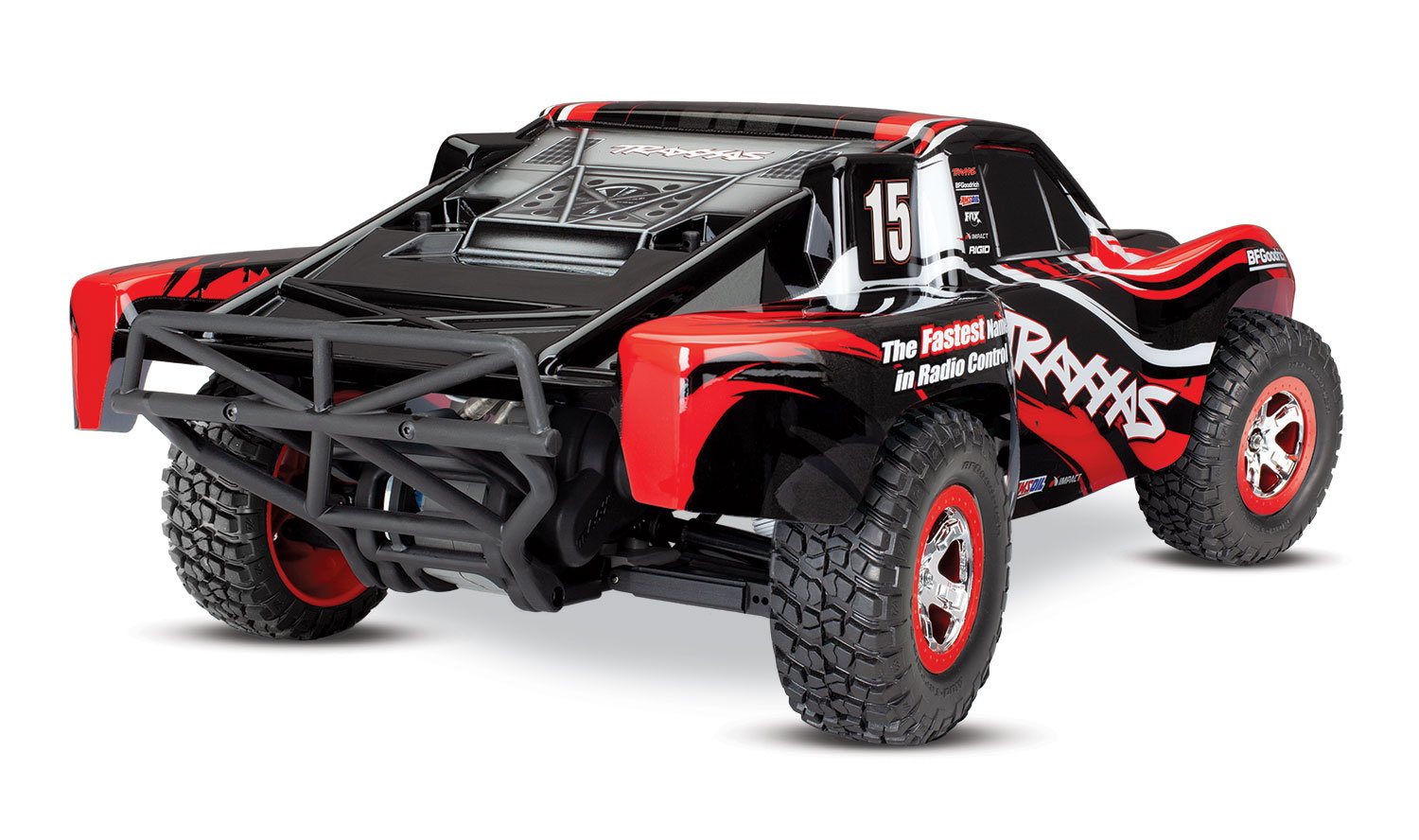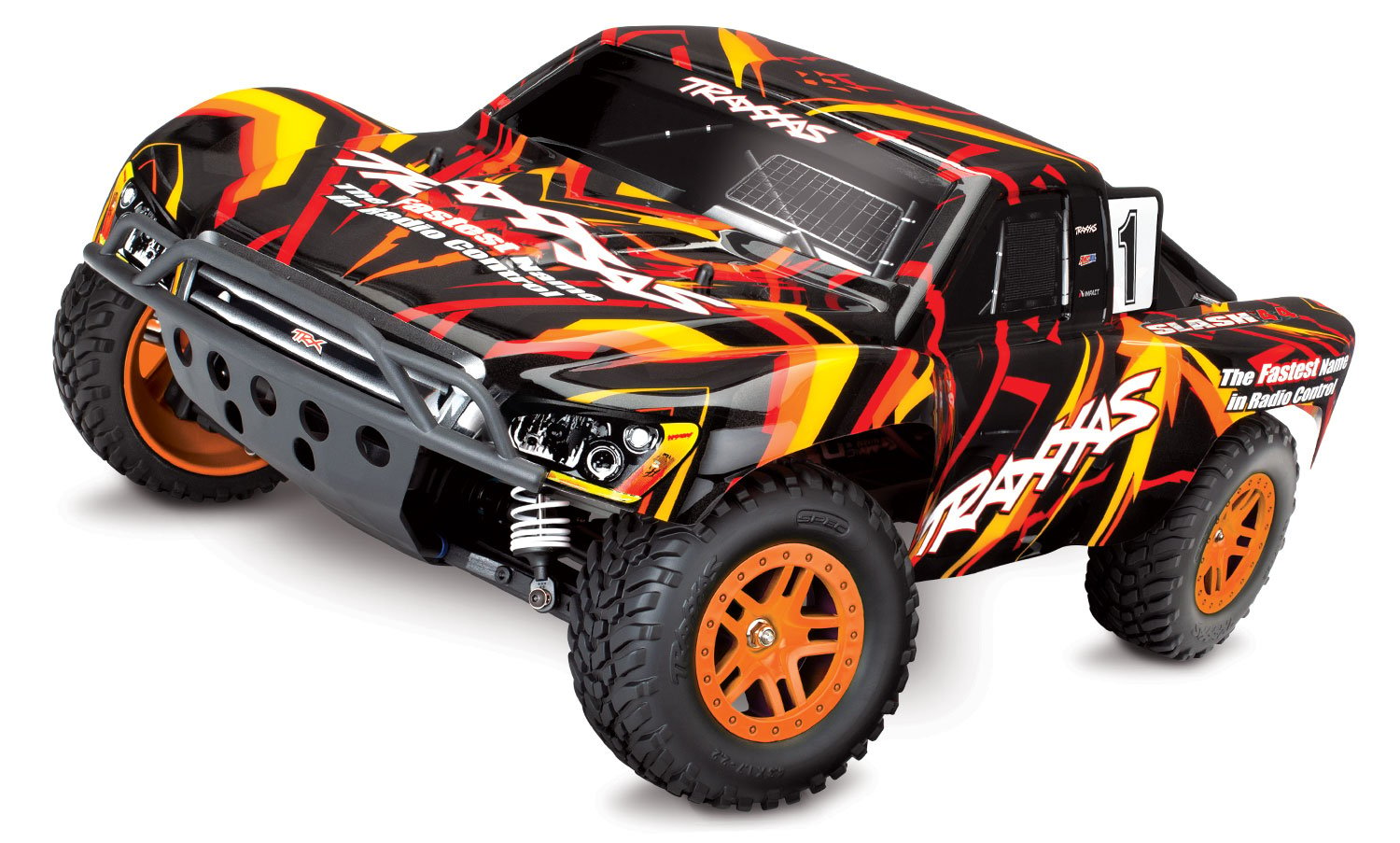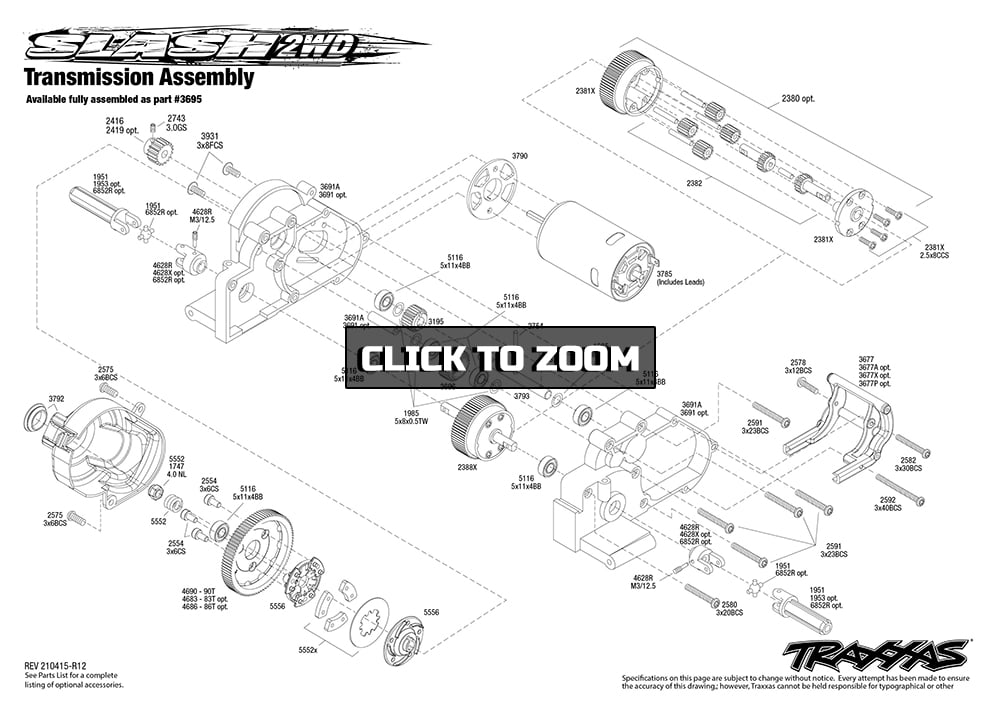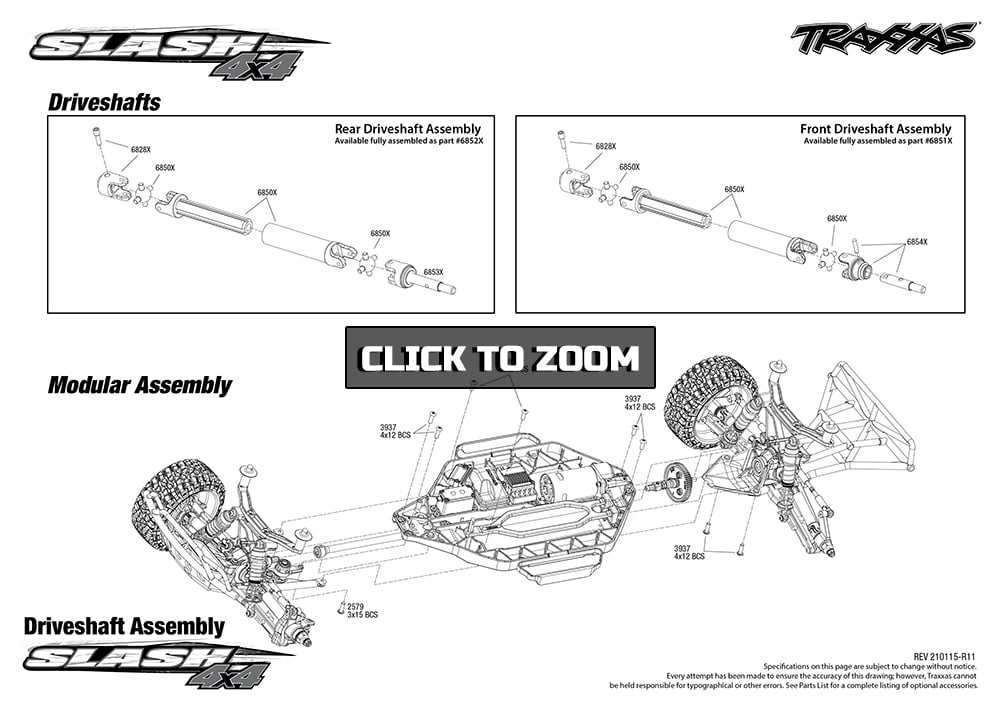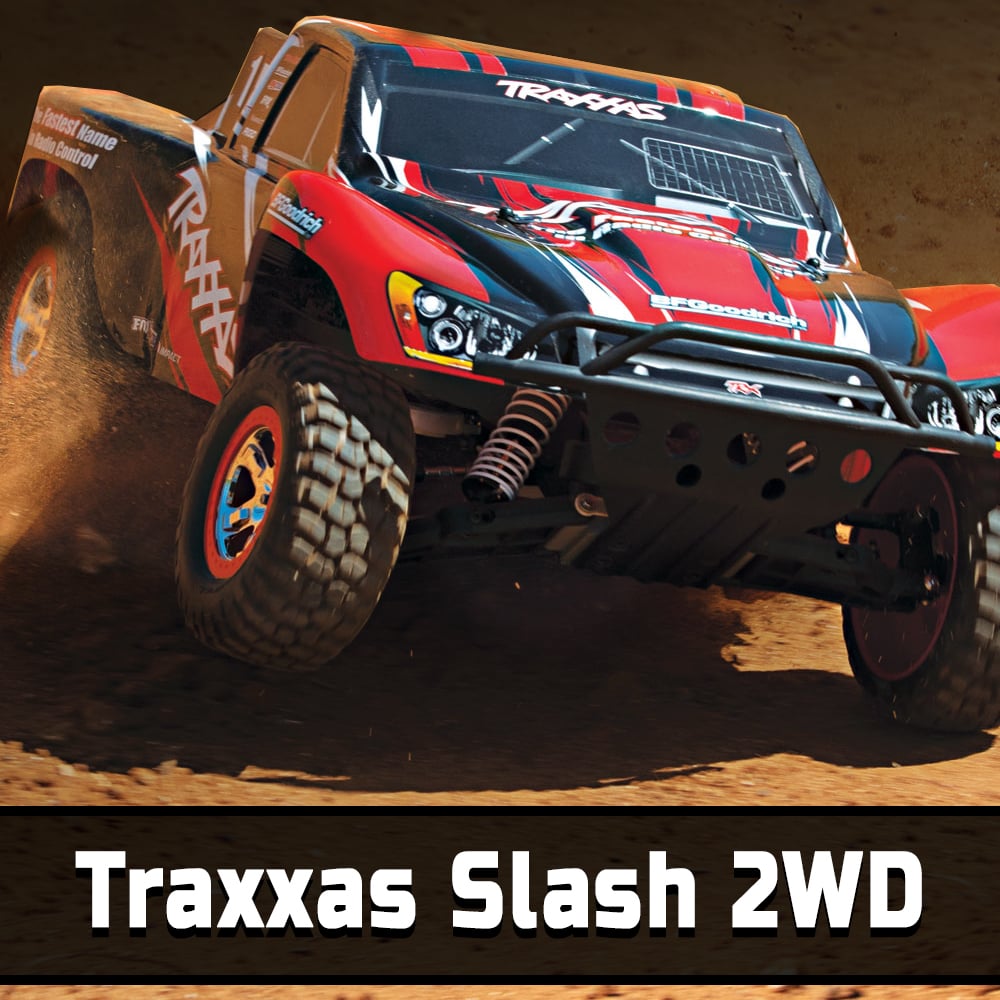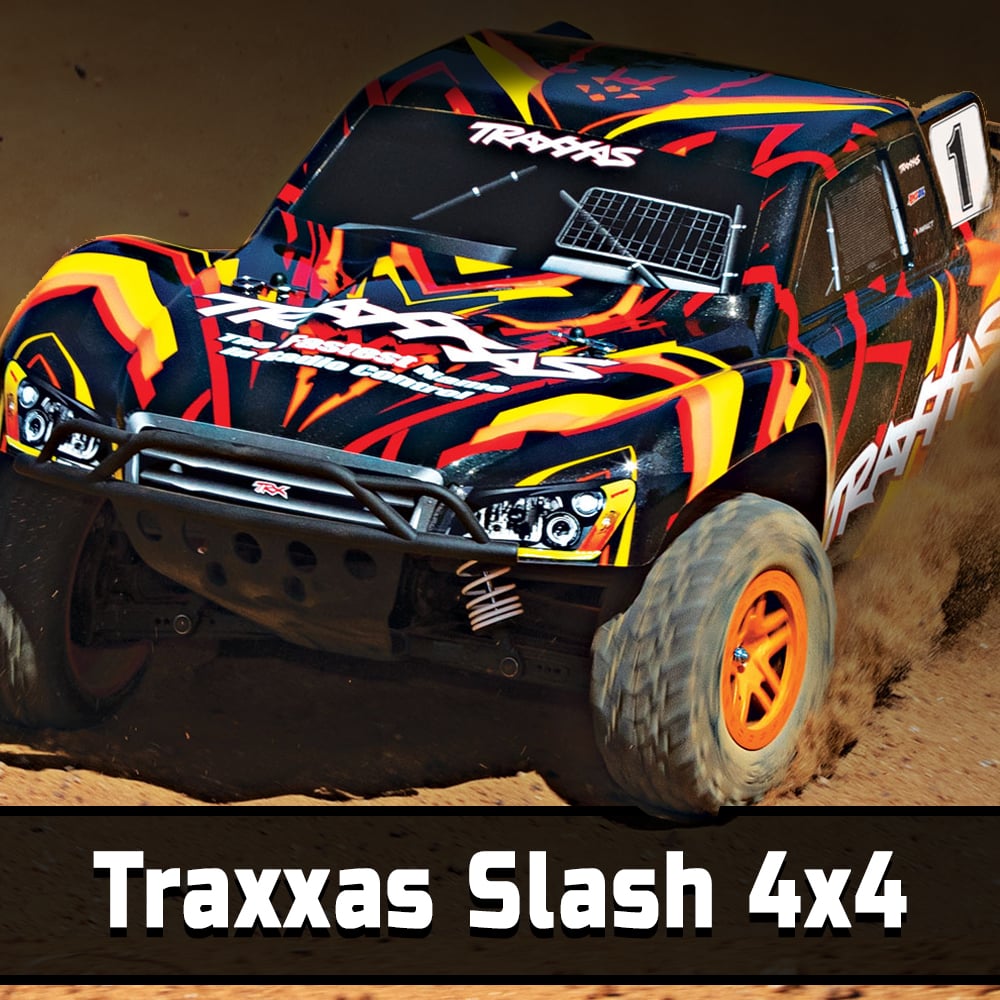Traxxas Slash 2WD or 4WD. Which is Best?
Just like full-size automobiles, R/C models are offered in two-wheel drive and four-wheel drive options. That’s why we can have two Traxxas Slash models that look the same, but they are not. In this article, we talk about the two-wheel drive and four-wheel drive Slash models, why you would want one over the other, and ultimately which is best.
Traxxas Slash 2WD vs Traxxas Slash 4x4
In the R/C world, when we talk about two-wheel (2WD) and four-wheel drive (4x4) models, we’re just talking about how many wheels are attached to the drivetrain and spin under acceleration and slow down when braking.
When we refer to a two-wheel drive model, almost always in R/C models, it’s a rear-wheel drive model, and just the rear wheels are powered, not the front. Although there are some front-wheel drive R/C models, it is less common, and they’re almost always on-road models, but we’re not going to be discussing that here.
On the four-wheel drive side, they sometimes refer to them as all-wheel drive in the full-size car world. With trucks, they still call them four by fours (4x4). But for R/C, a 4WD model has all four tires wheels connected to the drivetrain. Thus, being powered under acceleration and stopped under braking.
One of these models is a two-wheel drive, and one of them is a four-wheel drive model. They look the same, but underneath they are very different models and have very different characteristics when you go out and use them. They are also quite different on your wallet when it comes time to maintain them.
First up is the Traxxas Slash 2WD
This truck has a fairly basic layout, just like most two-wheel drive models. Mechanically there isn’t a whole lot going on, except in the back end of the model. The electric motor powers the transmission, which turns the differential, and then that diff has driveshafts that power each of the tires in the back.

Next is the Traxxas Slash 4x4.
This layout is a little bit more complex than the two-wheel drive. Essentially there is a motor that powers a center driveshaft. This driveshaft distributes a single power source to two ends of the model. In the rear-end, we have a differential, and that diff is connected to the driveshafts that power the axles. If we follow the center driveshaft up to the front, this is a four-ball, four-wheel drive truck with a second differential. And, this kit has another set of driveshafts that power the front tires.

So, what does this all mean, and why should you care?
The two-wheel drive model is rear-wheel driven, and that means the rear tires are pushing. With the four-wheel drive model, not only are those rear tires pushing, but the front tires are always pulling. When you have a push-pull situation, the system generates a lot of traction. This system wants to be in motion continually. Therefore, the four-wheel drive model will produce more traction and excel, rather than getting stuck in really loose, loamy situations, such as sand and mud, or rough terrain where there are obstacles.
A two-wheel drive model performs just great with those rear wheels pushing but not in all situations. For example, the 2WD model doesn’t generate the same traction in really loamy sand or mud. And, the rear tires will just end up spinning, digging out holes, and sinking. The same can be said when it comes to the brakes. Again, on a two-wheel drive model, when you try to slow down and apply the brakes, it’s just the rear tires doing the work.
On the four-wheel drive model, you have all four tires applying the same force generating a lot of traction, and you can come to a stop faster. Therefore, four-wheel drive models are generally more in control. But it’s not all roses and butterflies for four-wheel drive models.
Are there cons to buying a 4WD kit over a 2WD?
Four-wheel drive models have a lot more mechanical parts to wear out. For example, on a 4x4, you have a front and rear differential, front and rear driveshafts, plus a center driveshaft. So down the road, there are more parts in a four-wheel drive model to replace. On the other hand, you only have to worry about the rear end with a two-wheel drive model. With fewer parts, the maintenance requirements are lower for the 2WD versus the 4WD version.
Besides the cost of repairs, those additional parts on the four-wheel drive model are almost always heavier than the two-wheel drive counterpart. The drivetrain has more rolling mass, rotational mass, and overall weight. And typically, a 4WD model delivers more strain to the system; more strain in the drivetrain, more strain on the motor, more strain on your electronic speed control, and more strain on your LiPo or NiMh battery. It’s common for four-wheel drive short course drivers to puff their LiPo’s, and that doesn’t happen as much with the two-wheel drive truck.
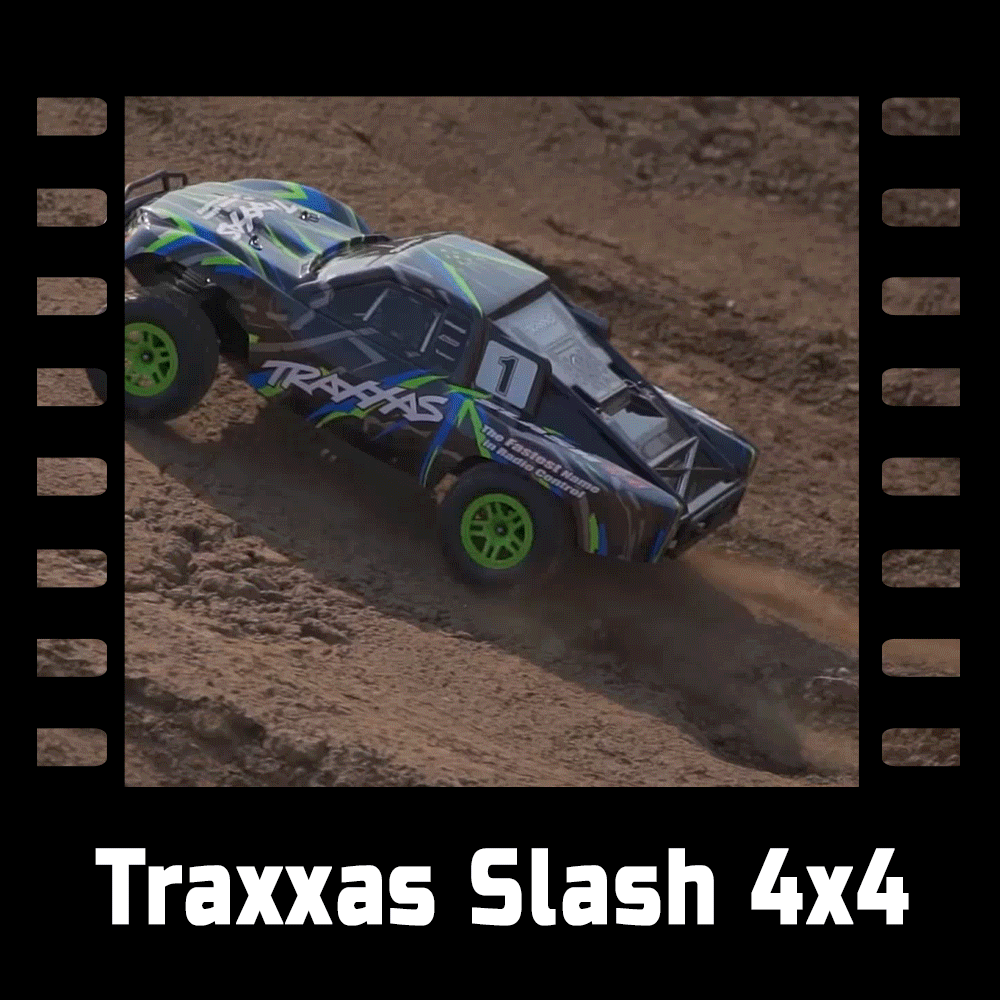
Conclusion
In the end, which is best, the Traxxas Slash 2WD or the Traxxas Slash 4x4? Each platform has its pros and cons. For example, the four-wheel drive version will give you great control, but there are more upfront costs and a higher amount of strain on your electronics. On the other hand, the two-wheel drive is a great platform that’s easy to work on, will cost you less to maintain and will be less stressful and strenuous on your electronics if you don’t mind the slight sacrifice in traction.
Although we used the Traxxas Slash for comparison, the same applies to nearly all two and four-wheel drive radio control kits. But you really can’t go wrong with either of these incredible trucks.
Traxxas Slash 2WD
Pros:
Less Upfront Cost
Less Maintenance Cost
Easier To Work On
Slightly Faster Out of the Box
Lighter Weight = More Run-Time
Cons:
Less Traction
More Challenging on Loose Terrain
Less Control & Stability
Traxxas Slash 4x4
Pros:
Handles Rougher Terrain
Higher Quality Diff & Drivetrain
Heavy Duty Parts
Better Weight Distribution
Cons:
More Expensive
More Maintenance Cost
More Stressful on Electronics
Front Tires Wear Faster
Heavier = Less Run-Time
Watch Brett's Review
Which is Best: 2WD or 4WD? Traxxas Slash Short Course Trucks
Watch "Which is Best: 2WD or 4WD? Traxxas Slash Short Course Trucks" on our YouTube channel, and while you're there, be sure to check out more new product review videos.
Featured Items
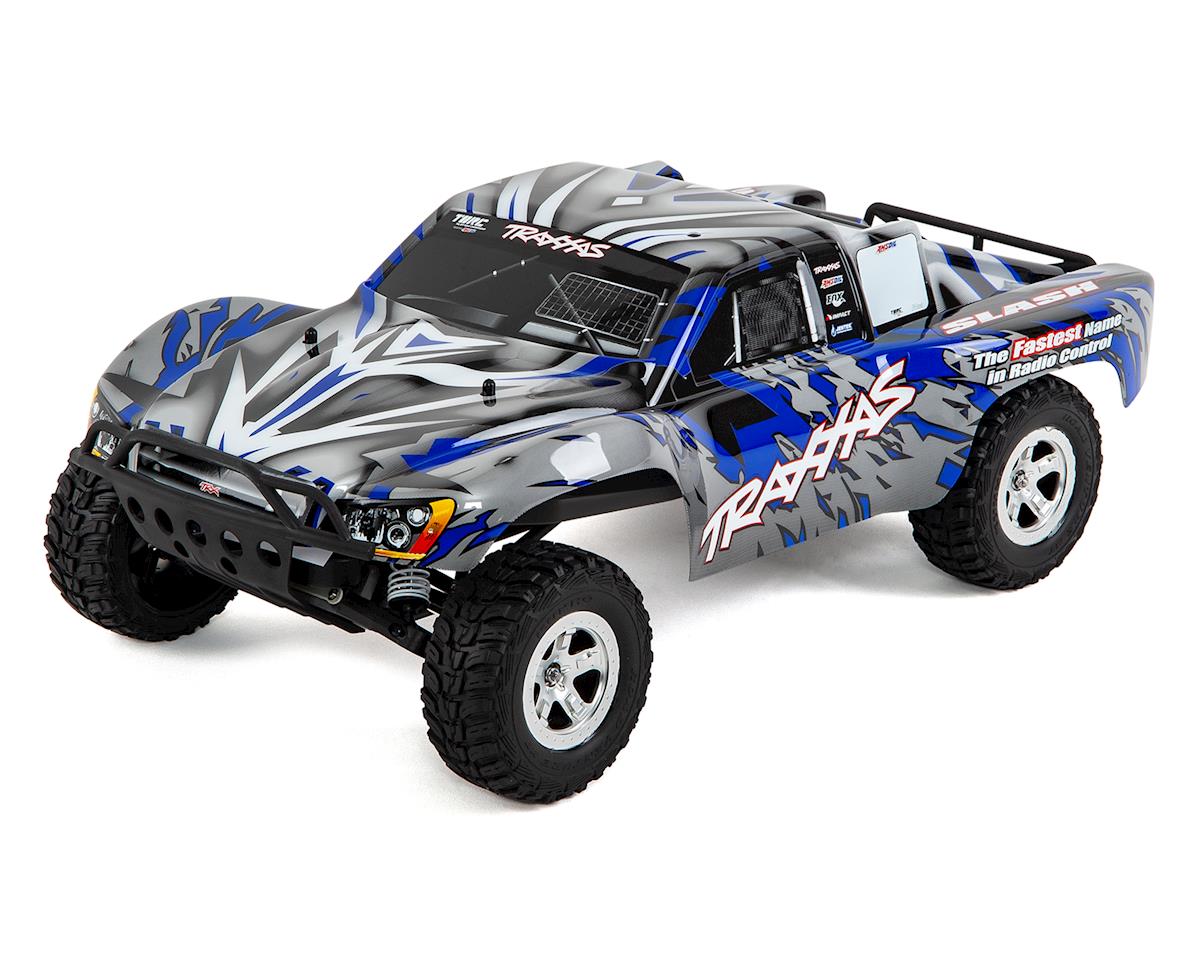
Traxxas Slash 1/10 RTR Electric 2WD Short Course Truck (Blue) w/TQ 2.4GHz Radio System TRA58024-BLUEX
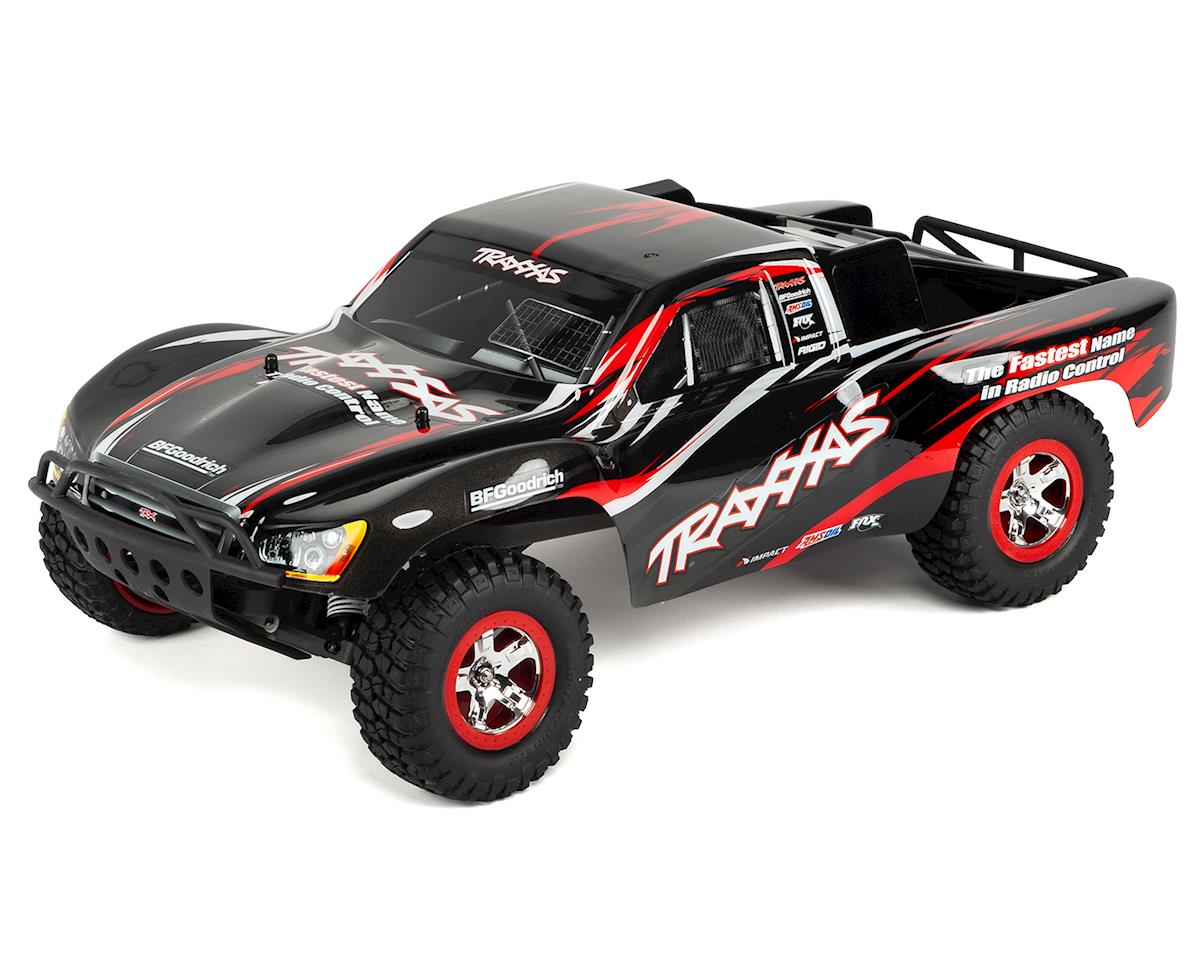
Traxxas Slash 1/10 RTR Short Course Truck (Black) w/XL-5 ESC, TQ 2.4GHz Radio, Battery & Charger TRA58034-1-BLK
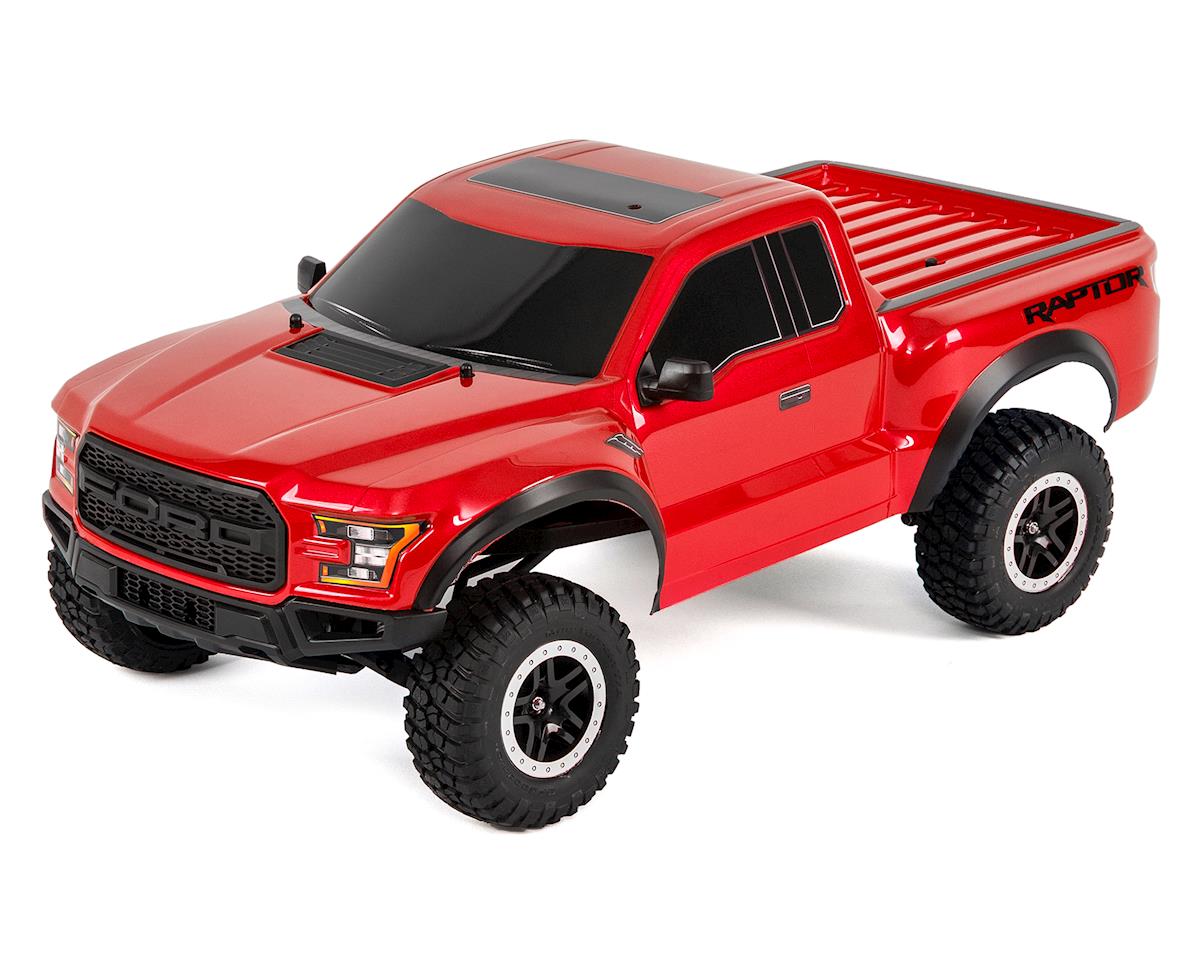
Traxxas 2017 Ford Raptor RTR Slash 1/10 2WD Truck (Red) w/TQ 2.4GHz Radio, Battery & DC Charger TRA58094-1-RED
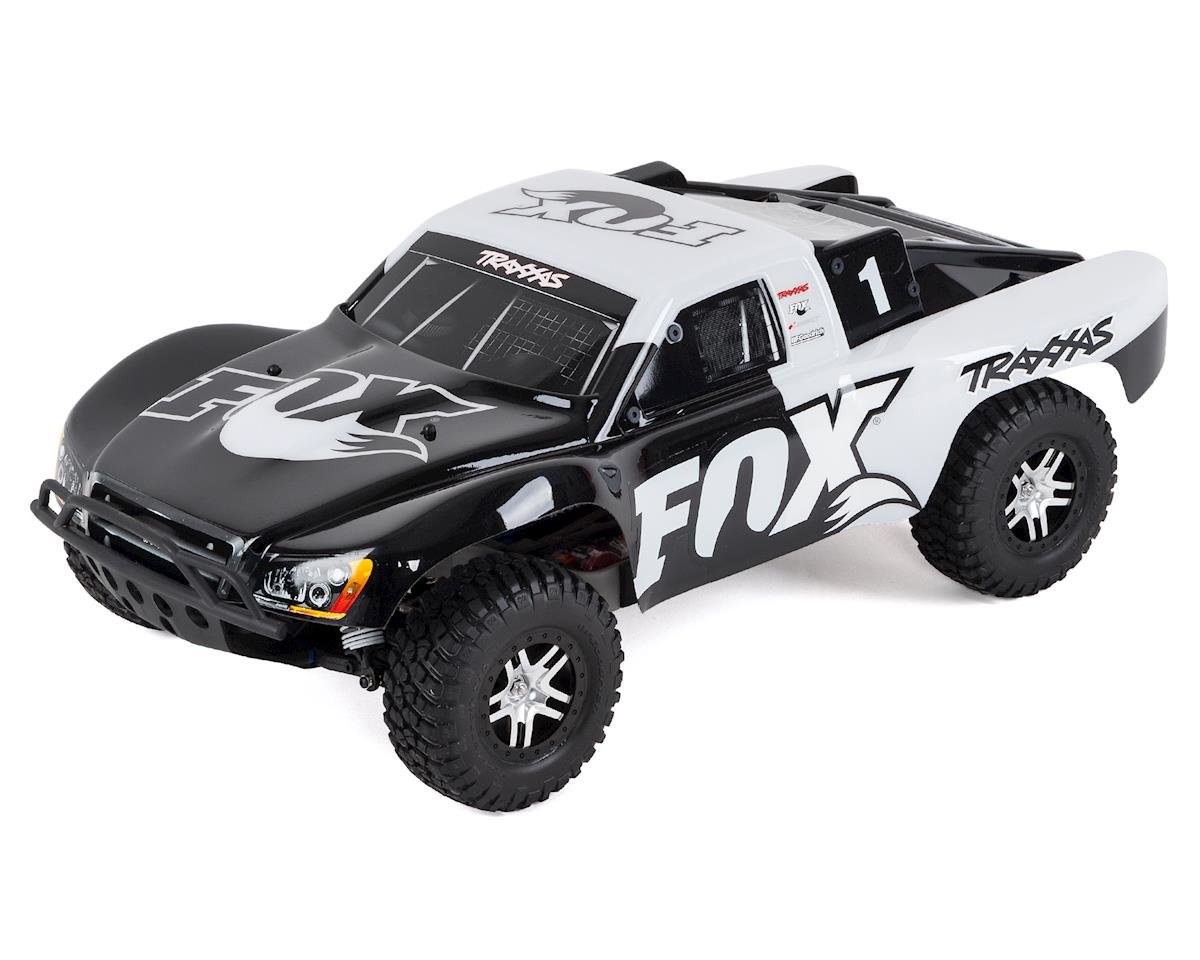
Traxxas Slash VXL 1/10 RTR 2WD Short Course Truck (Fox Racing) w/TSM & TQi Radio TRA58076-4-FOX
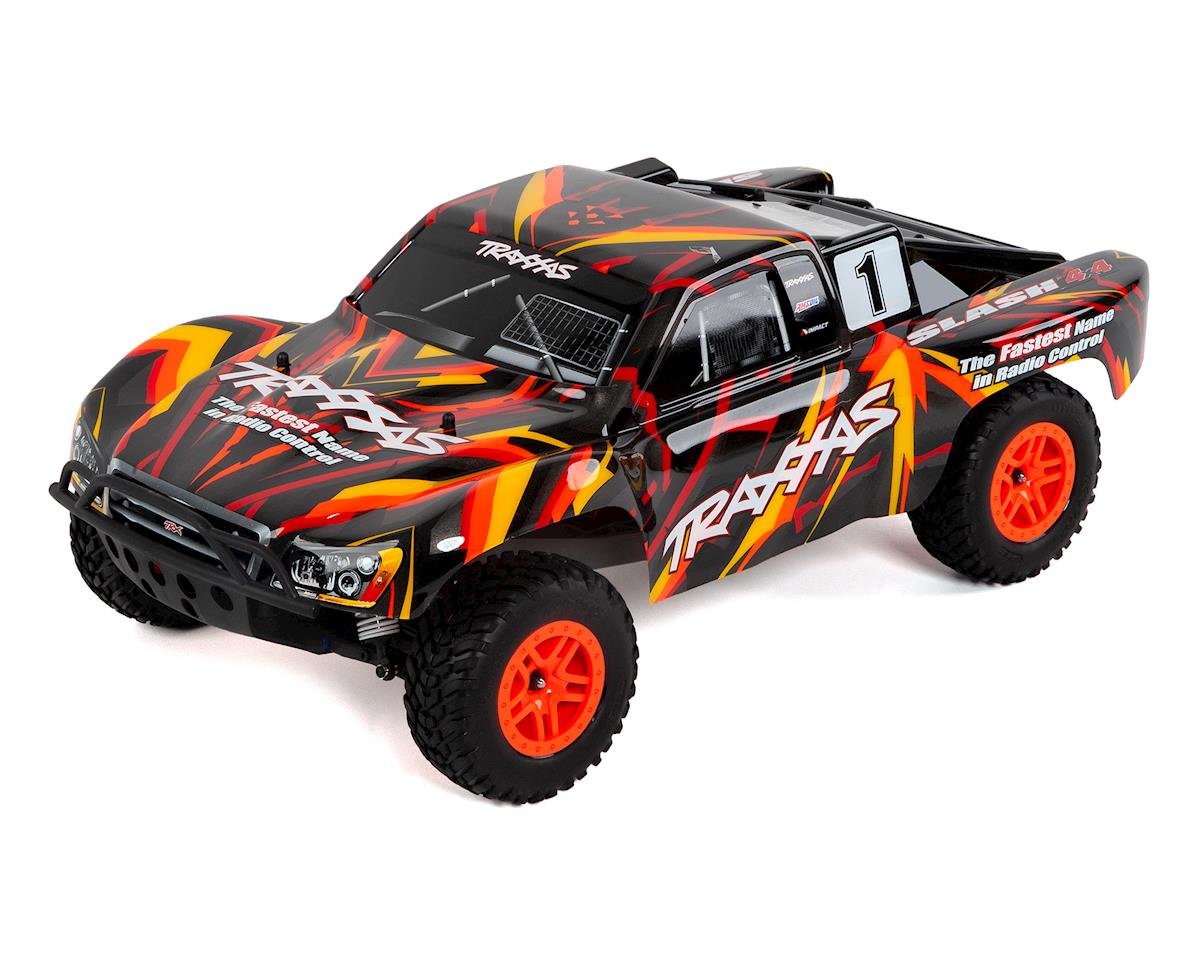
Traxxas Slash 4X4 RTR 4WD Brushed Short Course Truck (Orange) w/TQ 2.4GHz Radio, Battery & DC Charger TRA68054-1-ORNG
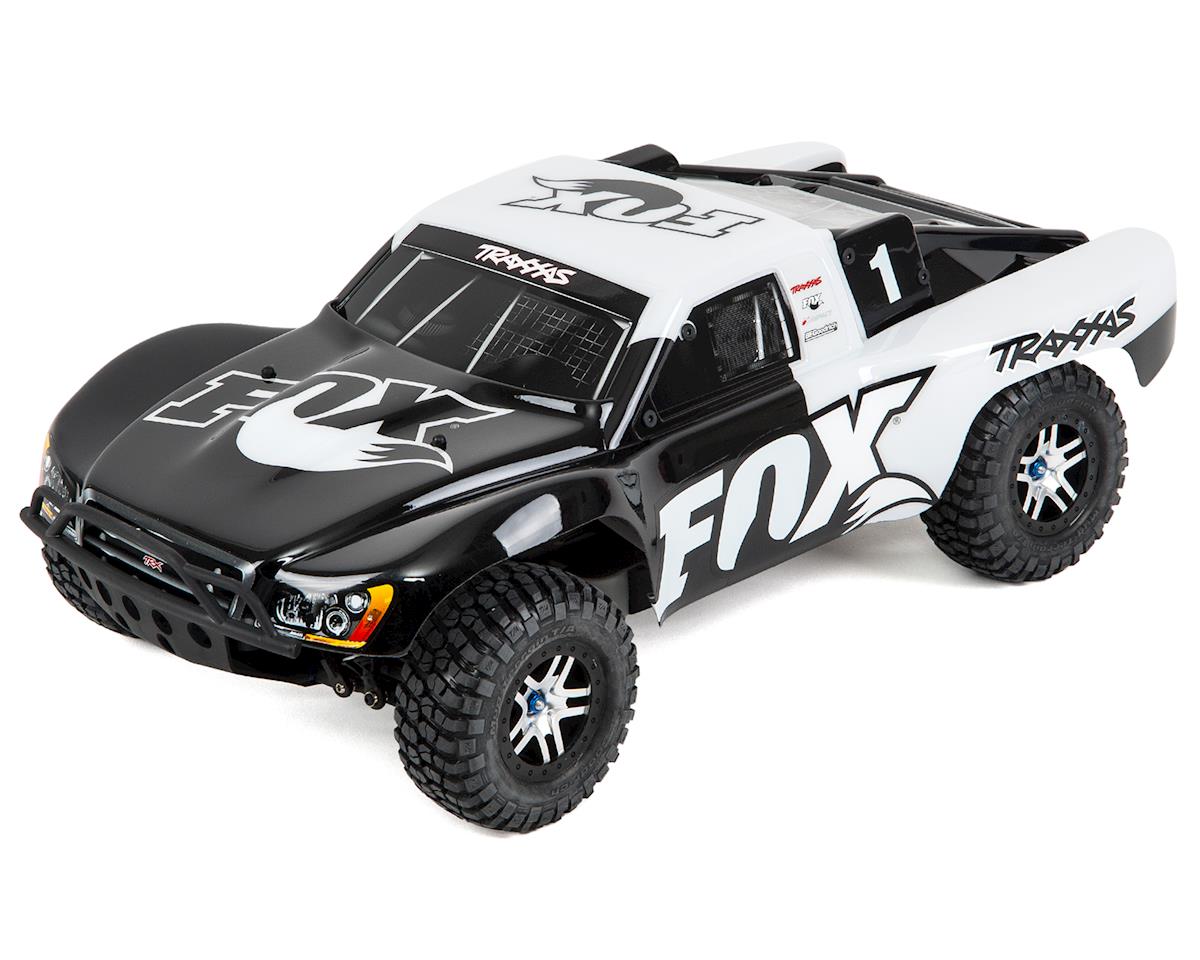
Traxxas Slash 4X4 VXL Brushless 1/10 4WD RTR Short Course Truck (Fox) w/TQi & TSM TRA68086-4-FOX
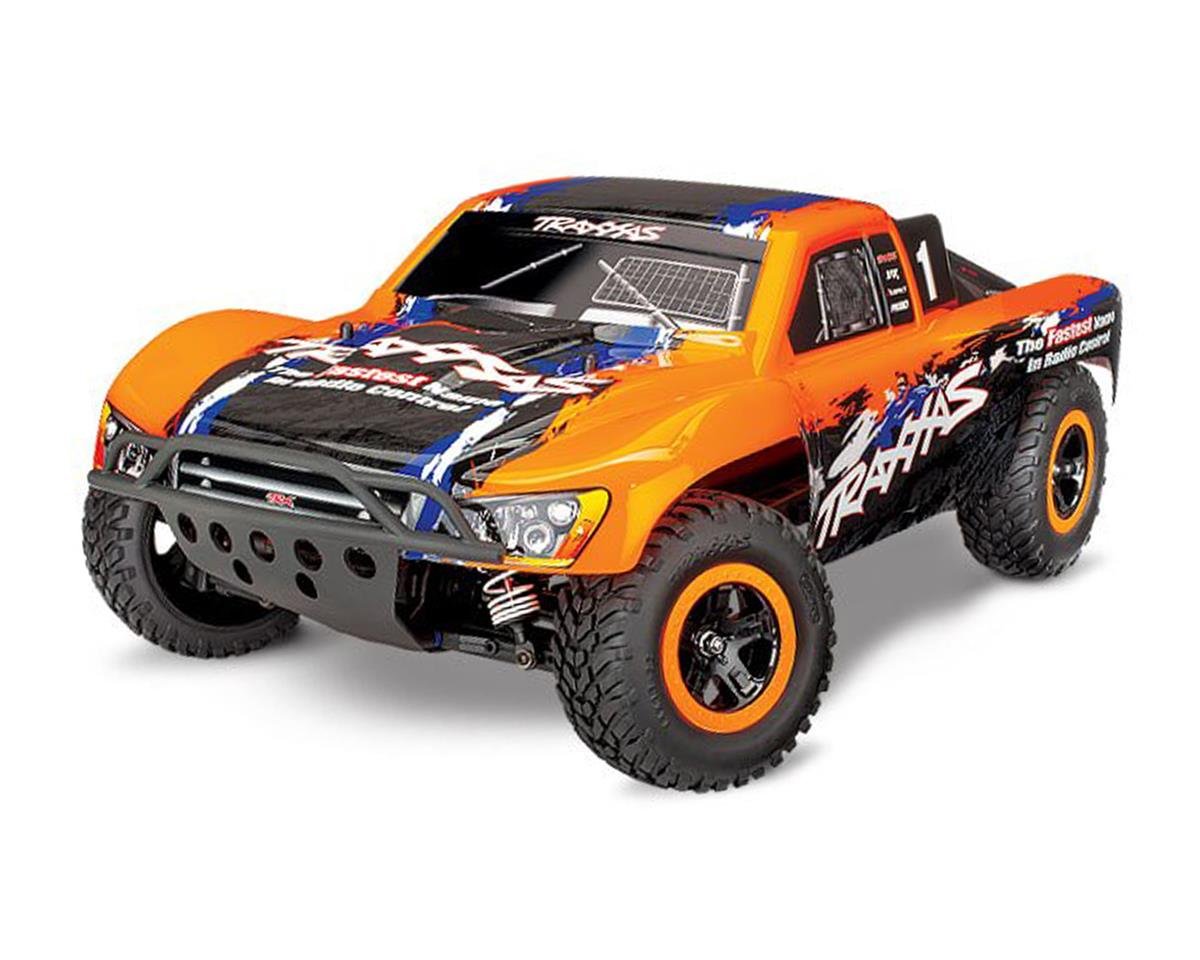
Traxxas Slash 4X4 VXL Brushless 1/10 4WD RTR Short Course Truck (Orange) w/TQi & TSM TRA68086-4-ORNG
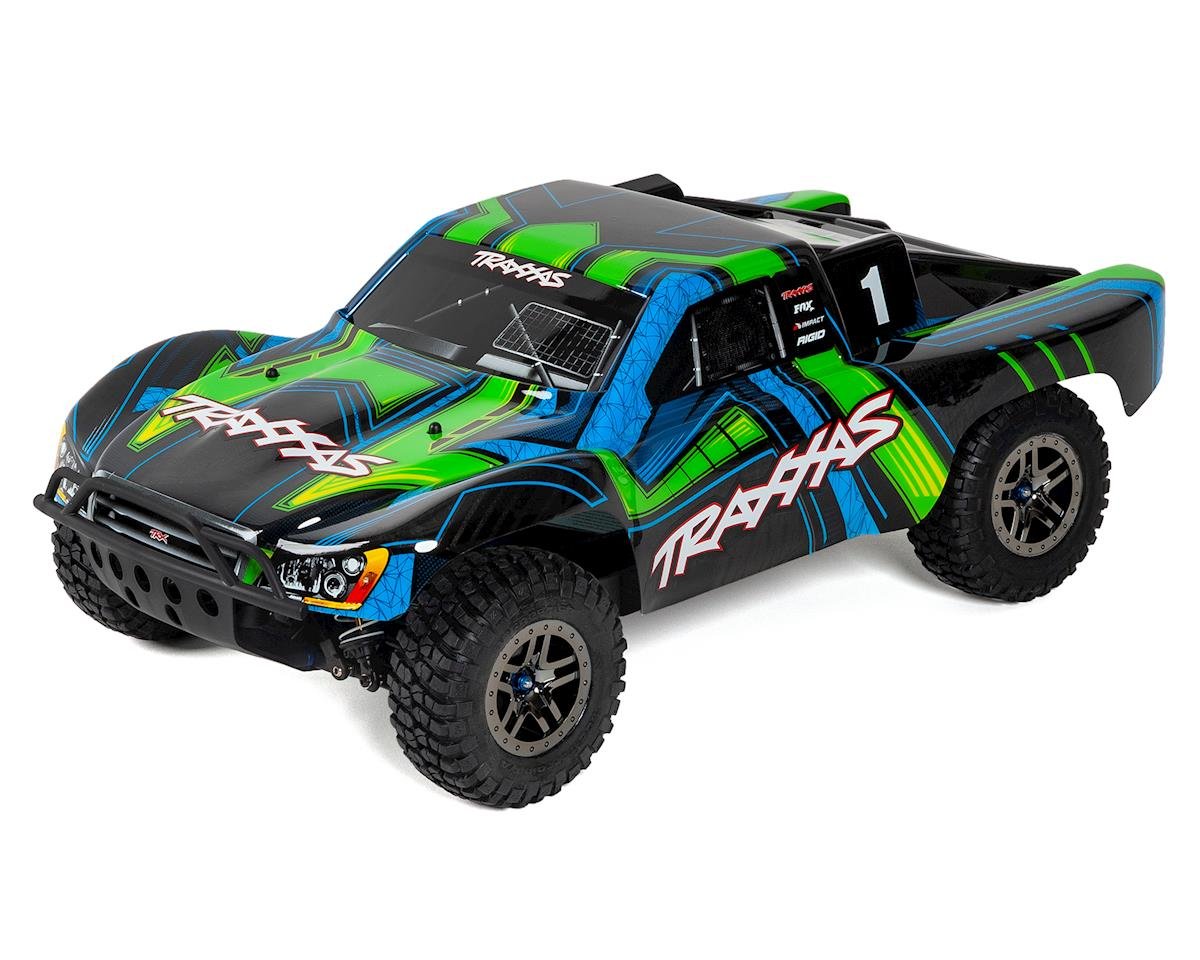
Traxxas Slash 4X4 "Ultimate" RTR 4WD Short Course Truck (Green) w/TSM & TQi 2.4GHz Radio TRA68077-4-GRN

